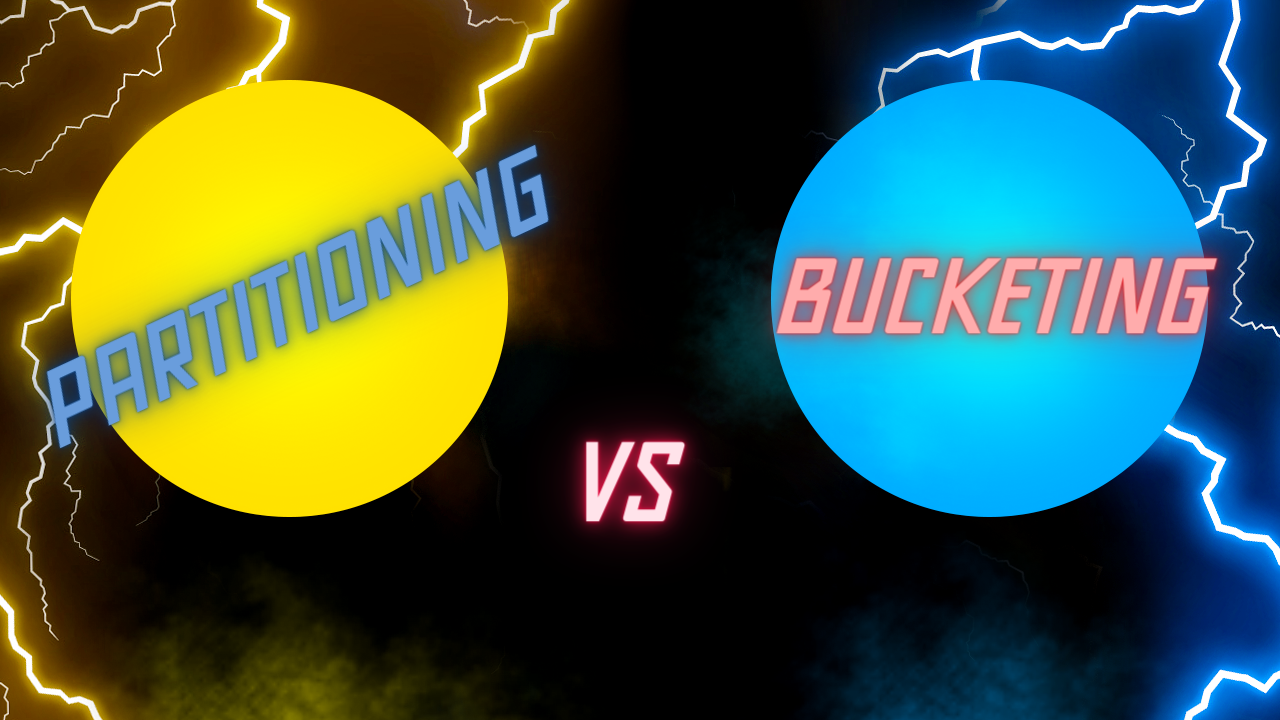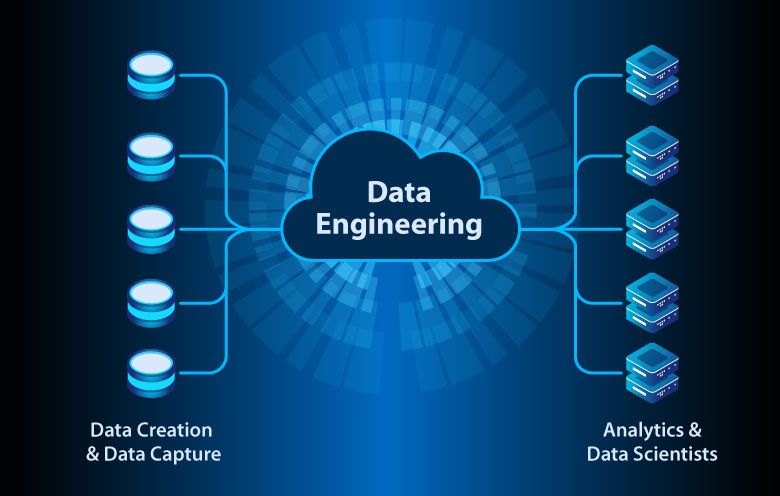Apache Spark and Apache Flink has become the leading technologies in the Big Data Landscape as they are prominent open-source frameworks for large-scale data processing with incredible amount of traction and community . While Spark and Flink has a lot of similarities, they inherently differ in wide variety of ways which makes them more suitable for different use cases. In this article, we will go through the similarities and differences between these two major powerhouses with the major aim of providing you with the right insights you need to make an informed decision that aligns with your organization’s data processing requirements.
We will go into the similarities and differences between Apache Spark and Apache Flink shortly but before that, it’s essential to understand the core architectures that underpin these two powerful technologies, as well as their primary functional and non-functional requirements.
Apache Flink
Apache Flink is an open-source, unified stream-processing and batch-processing framework developed by the Apache Software Foundation. The core of Apache Flink is a distributed streaming data-flow engine written in Java and Scala. Flink executes arbitrary dataflow programs in a data-parallel and pipelined manner. It is a framework and distributed processing engine for stateful computations over unbounded and bounded data streams. Flink has been designed to run in all common cluster environments, perform computations at in-memory speed and at any scale.

The key components of Flink’s architecture include:
Job Manager: The JobManager is responsible for coordinating the distributed execution of Flink Applications, as such it is in charge of deciding when to schedule the next task (or set of tasks). It also keeps track of tasks and execution statuses, coordinates checkpoints, recovery among others. This process consists of three different components including Resource Manager that used for allocating and deallocating resources; Dispatcher used for interfacing with the cluster over REST API and JobMaster used for for managing the execution of a single job graph
Task Manager: The TaskManager is often referred to as the Workers, they execute the tasks on the DataFlow usually in parallel. In a Flink cluster, there must always be at least one TaskManager that assigns new tasks into task slots where they are often executed.
Distributed Snapshots: Flink’s fault tolerance mechanism is based on distributed snapshots, which capture the state of the entire streaming dataflow at specific points in time. These snapshots enable consistent recovery in case of failures.
Resource Providers: Flink is able to run on various resource providers, such as YARN, Kubernetes, or standalone clusters. The main purpose of this to allow resource flexibilities.
Savepoints: Savepoints are essentially the same as checkpoints. Flink allows users to own and manage savepoints in a flink program, the only major difference between Savepoint and Checkpoint is the management; checkpoints are managed by the system (automated) unless configured to be retained, are discarded after execution while savepoints are handled and managed by the users.
Apache Spark
Apache Spark is an open-source unified analytics engine for large-scale data processing. Spark provides an interface for programming clusters with implicit data parallelism and fault tolerance. It leverage the master-worker architecture which consists of the driver running on the master node and a lot of worker nodes which consists of task executors.

Key components of Spark’s architecture include:
Spark Driver: The spark driver is the program that declares the transformations and actions on RDDs of data and submits such requests to the master, mostly, the driver exists in the master node, route and handles requests to the master node.
Resilient Distributed Datasets (RDDs): RDDs are the primary data abstraction in Spark, representing immutable, partitioned collections of records that can be processed in parallel across the cluster.
Spark Executors: The Spark Executors exists on the worker node. They spin up worker processes that perform computational tasks on the partitions of an RDD or DataFrame.
SparkContext: The SparkContext is the entry point for Spark program. It represents the connection to a Spark cluster, and can be used to create RDDs, accumulators and broadcast variables on that cluster.
Cluster Managers: This is a pluggable component of Apache Spark, it allow you run your spark programs on various cluster managers, such as Apache Mesos, YARN, Kubernetes, or its own standalone cluster manager. The coordination on the Cluster Manager happens with the help of a SparkContext.
While Spark’s architecture is designed to handle both batch and streaming workloads, its micro-batching approach for stream processing can introduce higher latency compared to Flink’s true streaming engine. Flink’s streaming-first architecture and distributed snapshots make it well-suited for low-latency, stateful stream processing scenarios.
It’s interesting to note that Apache Spark is a popular choice for batch processing, machine learning, and advanced analytics workloads and could be applied to stream processing because of its RDD-based architecture and extensive library support (e.g., MLlib, SparkR). On the other hand, Apache Flink performs better in stream processing due to lower latency as opposed to micro-batching on Spark while still being applicable to batch processing.
Both architectures have their strengths and trade-offs, and deeper understanding of their design principles can help you make an informed decision based on your specific data processing requirements.
Shared Foundations: Where Spark and Flink Converge
Before exploring the different ways Spark and Flink diverges, it’s essential to recognize the core similarities that underpin both Apache Spark and Apache Flink:

Distributed Computing: Both frameworks (Spark and Flink) are primarily made for distributed computing to allow you to process large datasets over a number of clustered nodes. In this distributed structure, it can process data in parallel, and utilise the cluster’s pooled resources to improve performance and scalability.
Support for Batch and Streaming: Both Apache Spark and Flink have huge support for both batch and streaming processing, which in turn enables them to meet a variety of data processing requirements and become the goto choices for data processing tasks. Both frameworks support historical processing (usually batch) or stream processing (live or data replay)
Fault Tolerance: By default, both technologies are big on fault tolerance and this features are one of the prioritised feature to minimise the risk of data loss or corruption and be more resilient when face with adverse effects.
Scalability: Since both Spark and Flink are made to scale horizontally, you can easily expand the cluster by adding more nodes as needed and leveraging their combined resources to process and handle extremely huge datasets.
Connectors: With the help of robust ecosystems and community, both frameworks have vast ecosystems of connectors that allow them to connect to a multitude of storage systems and data sources, such as HDFS, Amazon S3, Apache Kafka, and other databases. So there is little or no worries when connecting to majority of data points.
Divergent Paths: Where Spark and Flink Differ
Now that we’ve discussed the the areas of similarities it would be good to understand the areas where they essentially differ. This would be covered in terms of 7 key areas;
Architectural Design: Both technologies have distinct architectural approaches that makes them fundamentlly different. Spark’s architecture is based on the concept of Resilient Distributed Datasets (RDDs), which are once created, immutable collections of records that can be processed and reprocessed in parallel across the entire cluster. Apache Flink, on the other hand, is primarily built around a streaming-first architecture with a true streaming engine at its core.
Performance and Resource Utilization: Both technologies are super optimised for resource utulisation, with Flink being generally considered more efficient in terms of resource utilization (except in some cases where poor configuration may lead to bad resource management), especially for streaming workloads, Apache Spark is also sensitive to resource utilisation configs. Flink’s streaming-first architecture and advanced resource management capabilities often result in better performance and lower resource consumption compared to Spark, regardless, with the right configuration, it’s fairly easy to get the resource and performance optimisation in place.
Programming Model: Apache Spark uses Resilient Distributed Dataset (RDD) and DataFrame/Dataset abstraction for data wrangling, while Flink adopts a streaming-first approach with DataStream and DataSet APIs. As an engineer, your choice of Spark or Flink may be dependent on the granuality of control as well as the programming model preference.
Machine Learning and Advanced Analytics: Apache Spark has extensive and dedicated ML libraries out of the box, including Apache Spark MLlib and SparkR, makes it a popular choice for machine learning and advanced analytics workloads. While Flink also supports machine learning use cases, Spark has more dedicated libraries and widespread adoption in when it comes to Machine Learning which gives it an edge.
Stream Processing Paradigm: Apache Flink is often apprairsed for its low-latency, real-time stream processing capabilities. It processes data records immediately as they arrive, making it an ideal choice for time-critical applications that demand minimal latency alternatively, Apache Spark’s stream processing, while it’s undoubtedly powerful, follows a micro-batching approach, where each data are processed in micro-batch mode, this is both an upside and downside to use Spark’s model as it can introduce higher latency compared to Flink’s true streaming model.
Windowing and Time Handling: Apache Flink provides more advanced, granular windowing and time handling capabilities out-of-the-box especially with DataStream API bar SQL API, simplifying the development of time-based operations in streaming applications. Alternatively, windowing capabilities and time handling is achievable with Spark with extra sets of handling.
Ecosystem and Adoption: In terms of active and vibrant communities both technologies have robust communities and ecosystems of tools and integrations, Spark has a larger user base and is more widely adopted, particularly in the batch processing, stream processing and machine learning domains and this invariably translates to more tools and adoption by the community when compared to Flink.
Choosing the Right Tool for Your Data Processing Needs
Utimately, the decision whether to use Apache Spark or Apache Flink will depend on your specific use case, performance and resource requirements, and the nature of your data processing workloads. Regardless, here are some general insights that can help you make an informed choice:
Batch Processing and Machine Learning: If the your primary focus and use case is on batch processing, ML, or advanced analytics workloads, Apache Spark may be the more suitable choice with the ability to leverage its extensive library support and rich ecosystem in these domains. While it’s not impossible to use Flink for batch processing, in my opinion, Apache Spark is my goto tool for batch processing.
Real-Time Streaming and Low-Latency Requirements: In a situation where your requirement and demands is real-time true stream processing with minimal latency, such as in event-driven architectures or time-sensitive analytics, Apache Flink’s streaming-first approach and advanced windowing capabilities will be an excellent choice. In a case where you decide to use Spark, you made the right choice! Just be aware of the pros and cons.
Resource Efficiency and Streaming Performance: For efficiency and optimal performance use case in a streaming workloads, Apache Flink’s streaming-first architecture and efficient resource management may give it an edge over Spark.
Please note that the choice between Spark and Flink is not necessarily mutually exclusive. Many organizations big or small opt to use both frameworks, selecting the most appropriate tool based on the specific requirements of each data processing task. You can decide to perform batch processing with Spark and build a consumer with Flink or vice versa. This hybrid approach will allow you and your organization to leverage the strengths of both technologies and maximize the value derived from your data.
Conclusion
Wrapping up, Apache Spark and Apache Flink are two super powerful open-source frameworks that have revolutionized the way we manage, process and analyse big data. While both technologies share similarities in their distributed computing capabilities and support for batch and stream processing, they diverge in areas such as programming models, stream processing paradigms, performance and resource utilization, windowing and time handling capabilities, and ecosystem maturity, they are not mutually exclusive of each other.
Ultimately, the final decision in choosing Spark or Flink should be driven by a thorough understanding of your organization’s data processing needs, pros and cons of both technologies, performance requirements, and the specific characteristics of your workloads.
Big data space is a rapidly evolving eco system, staying informed and adapting to new technologies is crucial and extremely important. While Spark and Flink continue to evolve, their capabilities and use cases will change with time thereby necessitating regular re-evaluation of your data processing strategy. Try to embrace and leverage the power of these open-source frameworks, but remain flexible and open to new developments, always striving to leverage the best tools for your data-driven journey.






Leave a comment